Unreal Engine, best known for its prowess in crafting immersive gaming experiences, is now steering the wheel of innovation in automotive HMIs. This sophisticated engine has found a new highway, transforming traditional vehicle interfaces into dynamic and interactive hubs of connectivity and control. But Unreal Engine’s impact goes beyond aesthetics. Safety is paramount, and with Unreal Engine, vehicle manufacturers can provide informative yet unobtrusive displays of critical information, enhancing the driver’s awareness while maintaining the highest level of realism.
In today’s rapidly evolving automotive landscape, technology is not merely changing the way we drive; it is also revolutionizing how we interact with our vehicles. One of the most exciting developments in this regard is the integration of Unreal Engine, a powerhouse in the world of game development, into the automotive industry to create cutting-edge Human Machine Interfaces (HMIs). In this blog, we will explore how Unreal Engine is revolutionizing the road by enhancing the user experience within vehicles.
From dynamic design-driven development to collaborative innovation, Unreal Engine is paving the way for enhanced user experiences within the confines of our automobiles. Whether you’re adjusting your climate controls, navigating through complex routes, or simply enjoying in-car entertainment, Unreal Engine is elevating the in-vehicle experience to a whole new level.
But Unreal Engine’s impact goes beyond aesthetics. Safety is paramount, and with Unreal Engine, vehicle manufacturers can provide informative yet unobtrusive displays of critical information, enhancing the driver’s awareness while maintaining the highest level of realism. In this blog, we’ll uncover how Unreal Engine strikes the perfect balance between innovation, functionality, and safety, all while ensuring that the future of driving is not just efficient but truly exhilarating. So fasten your seatbelts, as we embark on this exciting journey into the world of it in automotive HMIs.
Table of Contents
Here’s a breakdown of the key features of Human Machine Interfaces in Modern Automotives.
1. Design-driven development

Design-driven development in Unreal Engine refers to the process of using Unreal Engine’s versatile capabilities to create Human-Machine Interface (HMI) systems, particularly in the automotive industry. Unreal Engine empowers designers to have a dynamic impact on projects by enabling quick iterations and seamless integration of functionality into their HMI designs. Designers can visualize their interfaces with realistic graphics and interactivity, simulate and test them under various scenarios, and prototype realistic HMI systems. It fosters collaboration among team members and supports cross-platform deployment, making it a preferred choice for innovative HMI development.
The mention of the USA’s largest car manufacturer highlights how Unreal Engine is revolutionizing HMI development in the automotive sector. By leveraging Unreal Engine’s real-time rendering, interactivity, and simulation capabilities, this manufacturer can create visually appealing and functional interfaces that enhance the user experience in vehicles. It’s design-driven development approach aligns with the industry trend of using real-time engines to streamline HMI design and development, ultimately leading to more sophisticated and user-friendly interfaces in automobiles.
2. Visual representation

Visual representation is a pivotal feature in Human Machine Interfaces (HMIs), with Unreal Engine playing a significant role in implementing graphical elements like icons, charts, images, and animations to convey complex information and system status in an easily comprehensible manner. Unreal Engine allows icons to symbolize functions or actions, charts and graphs to illustrate data trends, and images to provide context or represent physical components. Unreal Engine’s animations are employed to demonstrate processes or transitions. Color coding, status indicators, and flow diagrams, all within Unreal Engine’s capabilities, further aid users in understanding system states.
Interactive elements, enabled by Unreal Engine, facilitate user engagement through touch or click interactions. These visual aids, made possible by Unreal Engine, significantly contribute to improved user comprehension, informed decision-making, and a more user-friendly experience within HMIs. Unreal Engine-equipped HMIs often feature dashboard displays, combining various visual elements like gauges and meters to provide a comprehensive overview of the system’s status on a single screen. Additionally, It can be used to create 3D models for representing physical objects or environments in advanced HMIs, particularly in applications like virtual reality simulations.
3. Interactive Animations
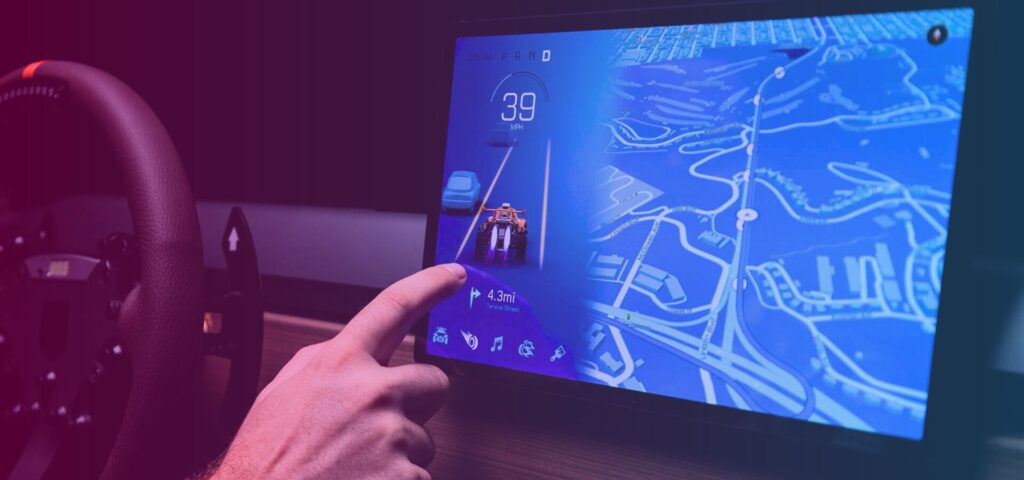
Unreal Engine offers a comprehensive toolset for designing stunning and interactive 3D visuals. Its advanced scalable renderer ensures optimal performance across different hardware configurations. The engine’s standout feature, Niagara VFX, serves as a state-of-the-art particle system, enabling the creation of realistic effects like fire, smoke, and water, adding depth and immersion to 3D environments. Furthermore, Unreal Engine empowers developers to craft highly customizable user experiences, allowing them to tailor the UI and overall interactions to meet individual preferences or specific requirements.
With support for downloadable content (DLC), developers can seamlessly update and enhance the user experience, ensuring it remains fresh and adaptable without requiring users to install new software versions. These capabilities make It a popular choice across various industries where visually engaging and interactive content is paramount, including gaming, automotive, and architecture. Unreal Engine is a versatile and powerful tool for creating interactive 3D visuals with a focus on high-quality rendering and customizable user experiences. It provides advanced features like the Niagara VFX particle system and supports the integration of downloadable content to keep users engaged and ensure that the UI remains fresh and adaptable.
4. Customization and Configuration
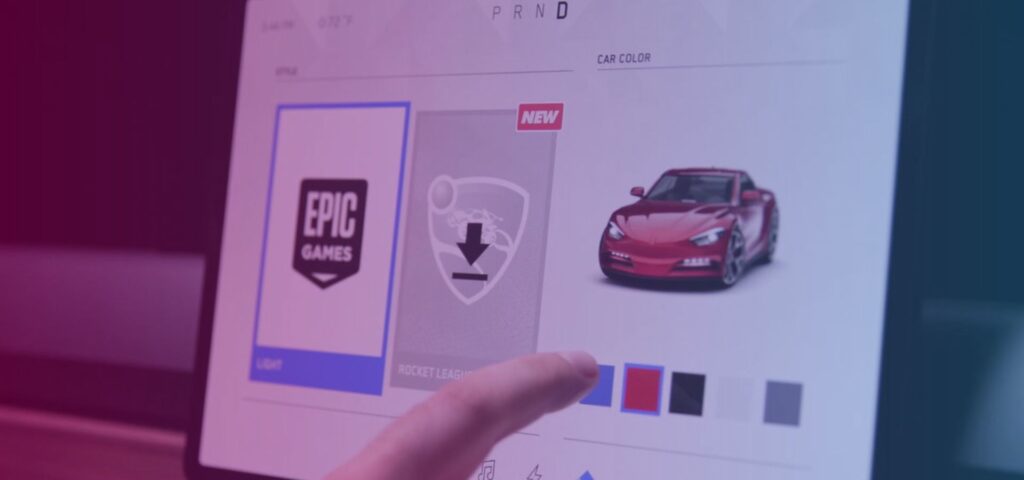
Unreal Engine’s customization and configuration features are instrumental in tailoring Human Machine Interfaces (HMIs) to meet specific user needs and preferences. Users of Unreal Engine-powered HMIs can finely adjust operational parameters, set limits, and establish user profiles, all within the powerful framework of Unreal Engine. This flexibility extends to personalizing display layouts, language choices, and security settings, ensuring that Unreal Engine-driven HMIs deliver a user-friendly and uniquely adaptable experience.
Additionally, Unreal Engine’s customization capabilities encompass configuring alarm triggers, data logging preferences, and even startup and shutdown sequences, ultimately enhancing operational efficiency and control within HMI systems. In complex environments with diverse user roles, the Unreal Engine’s capacity for customization and configuration not only streamlines operations but also bolsters safety and usability by allowing users to optimize the HMI’s interface and functionality to align precisely with their requirements.
5. Simulation and Effects
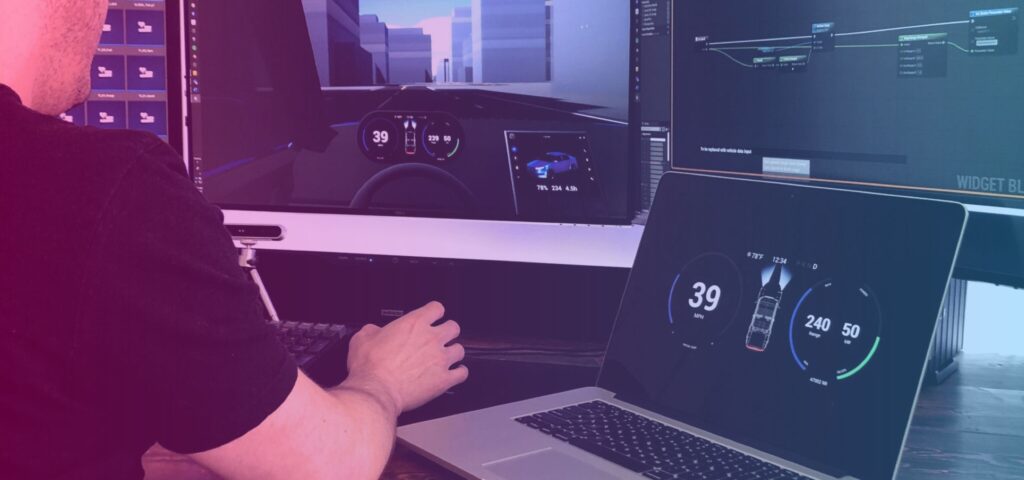
Unreal Engine offers a robust suite of simulation and effects tools that empower developers and artists to create immersive and visually stunning experiences. Niagara, the advanced particle system and visual effects editor allows for the creation of highly customizable particle systems, enabling effects like fire, smoke, and water with intricate behaviors. Additionally, It provide clothing tools for fabric simulation, making it easy to achieve realistic cloth movement and interactions within the virtual world. The Chaos physics and destruction system takes physics simulations to a cinematic level, allowing for the fracturing, shattering, and demolishing of objects and environments.
Moreover, strand-based hair and fur simulation adds depth to character design by enabling the creation of lifelike hair and fur on characters and creatures, enhancing their visual realism. These simulation and effects features are crucial for crafting visually captivating and interactive experiences across a wide range of applications, from games to architectural visualization.
6. Touchscreen Interactivity capabilities

Unreal Engine, a versatile game development engine created by Epic Games, has significantly influenced Human Machine Interfaces (HMIs) by incorporating touchscreen capabilities. Unreal Engine’s integration of touchscreens into HMIs enables users to interact directly with screens using familiar gestures like tapping, swiping, and pinching. This not only enhances user engagement but also simplifies the user experience, reducing the learning curve. touchscreen technology in HMIs has revolutionized user interaction, offering an intuitive and versatile interface. It streamlines user engagement, enhances adaptability, and saves space, but careful consideration of factors like durability and accessibility is essential for successful implementation.
While Unreal Engine-powered touchscreens offer intuitive and adaptable interfaces, it’s important to consider factors such as the durability of the touchscreen technology, especially in industrial settings, and the need for glove-friendly touch input. Additionally, accessibility features and compliance with standards should be assessed to ensure inclusivity. Overall, It’s incorporation of touchscreen capabilities in HMIs has transformed user interactions, providing a user-friendly and dynamic interface for a variety of applications.
7. Integration Support Capabilities
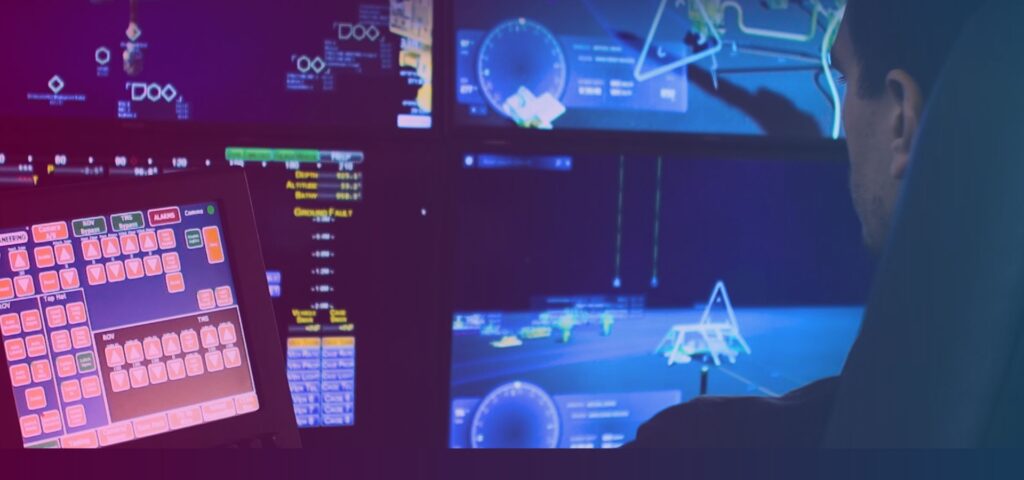
Unreal Engine, a powerful game development engine developed by Epic Games, plays a pivotal role in modern Human Machine Interfaces (HMIs). Its integration capabilities are particularly noteworthy, as Unreal Engine can seamlessly connect with various systems and software, including SCADA systems and databases. This integration empowers industries like manufacturing and automation to achieve centralized control, real-time data sharing, and efficient coordination across complex processes.
By leveraging Unreal Engine’s versatility, organizations can create visually engaging, user-friendly interfaces that facilitate intuitive interactions between humans and machines while harnessing the engine’s advanced capabilities for graphics and real-time performance. Its application in HMI represents a paradigm shift, enabling design-driven development, high-quality visualizations, and adaptable interfaces. Its impact extends to diverse industries, from automotive to industrial automation, where it enhances user experiences and operational efficiency. Its integration capabilities ensure that it remains at the forefront of HMI development, offering a robust solution for creating cutting-edge interfaces that bridge the gap between humans and machines.
8. Voice and Gesture Control
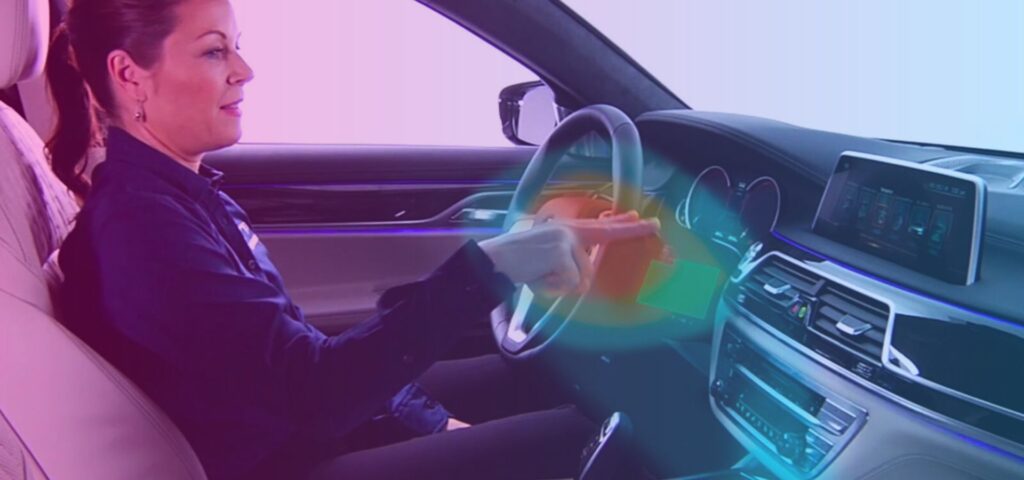
Unreal Engine, a powerful game development engine by Epic Games, is making a significant impact on Human Machine Interfaces (HMIs) across various industries. It offers advanced features like voice and gesture control, enabling users to interact with machines without physical contact. In automotive applications, It is leveraged to create visually engaging and user-friendly interfaces for vehicles, enhancing both safety and user experience.
The engine’s real-time rendering capabilities and customization options are particularly valuable in designing photorealistic graphics and dynamic infotainment systems. It enables quick prototyping, collaboration, and efficient use of company resources by allowing content reuse, ultimately delivering high-quality, customizable HMI experiences. It’s expansion into HMI development is contributing to the evolution of how humans interact with machines, opening up exciting possibilities for creators and manufacturers alike.
9. Real-Time Data Display
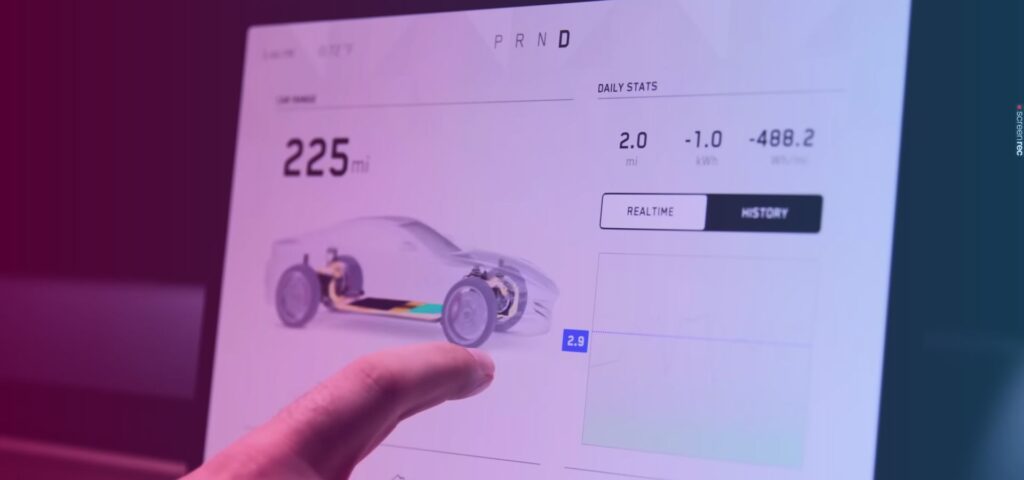
Unreal Engine is a powerful tool widely used in various industries, including automotive and gaming, for its capabilities in creating visually stunning 3D graphics and interactive experiences. In the context of the automotive industry, It is leveraged to enhance the Human Machine Interface (HMI) within vehicles. This results in visually appealing and user-friendly interfaces that allow drivers and passengers to control and interact with vehicle systems effortlessly. Unreal Engine’s real-time data display capabilities enable operators to monitor critical parameters like temperature, pressure, and speed in real-time, ensuring smooth and efficient vehicle operation.
Furthermore, its features, such as alarms and customization options, empower users to respond promptly to any anomalies or deviations from the desired performance, promoting safety and a seamless driving experience. Unreal Engine’s versatile application extends beyond automotive HMIs, with its technology also utilized in various other industries, including gaming, film, and healthcare. It stands out for its ability to create immersive and customizable interfaces, making it a favored choice for designers and developers looking to deliver high-quality interactive experiences. As technology continues to advance, Unreal Engine’s role in creating visually engaging and user-friendly interfaces remains instrumental in shaping the future of user-machine interactions across diverse applications.
10. Redundancy and Fail-Safe Mechanisms
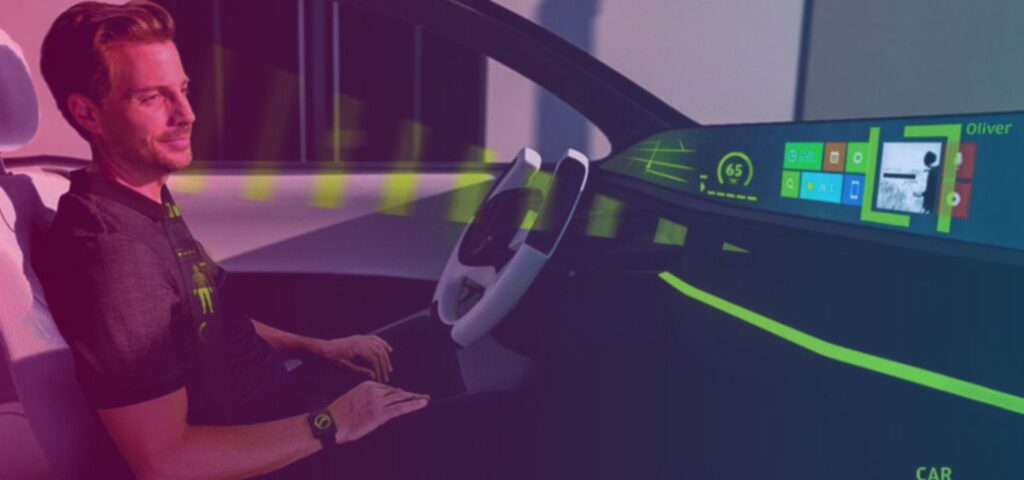
In critical applications, Human Machine Interfaces (HMIs) may integrate redundancy and fail-safe mechanisms to bolster system reliability and ensure continuous operations, particularly in instances of component or system failures. Unreal Engine, a versatile platform renowned for its capabilities in game development and visual rendering, is increasingly employed to design and optimize these HMI systems. Unreal Engine’s robust toolkit enables the creation of intuitive, visually engaging interfaces that offer real-time monitoring, control, and data visualization. Additionally, it facilitates the incorporation of redundancy and fail-safe measures, enhancing the reliability and resilience of HMIs in sectors such as industrial automation, healthcare, and aerospace. Unreal Engine’s flexibility and real-time features empower operators to manage critical processes effectively while safeguarding against unexpected disruptions.
Incorporating Unreal Engine into HMIs not only ensures user-friendly interfaces but also supports advanced features like touchscreen capabilities and data visualization, further enhancing the effectiveness of these critical systems. Redundancy and fail-safe mechanisms, when integrated with Unreal Engine, bolster system stability, enabling continuous operation even in the face of component failures. This combination of cutting-edge technology and robust fail-safe measures makes Unreal Engine an invaluable tool in critical applications where system reliability and uninterrupted functionality are paramount.
11. User Alerts and Haptic Feedback
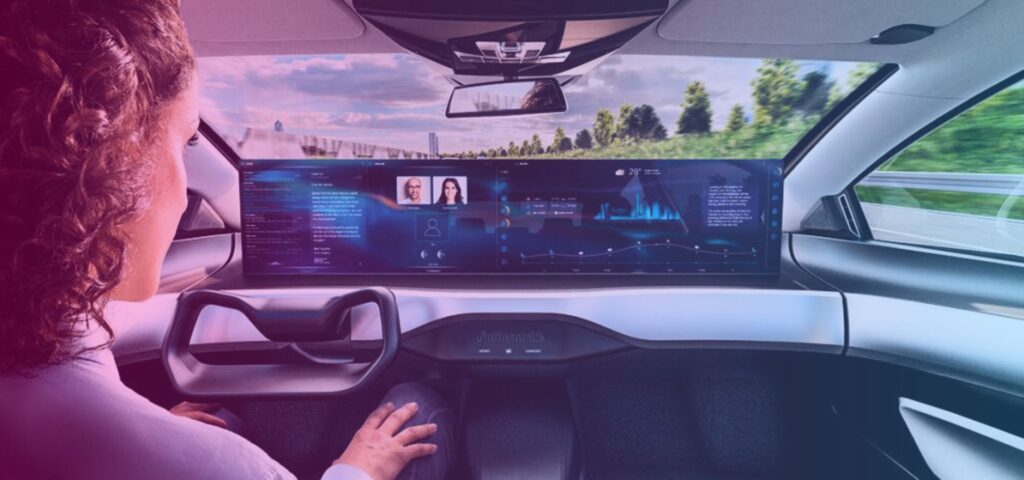
Unreal Engine, a powerful game development platform by Epic Games, is making significant strides in the automotive industry, particularly in the context of Human Machine Interfaces (HMIs). Unreal Engine’s real-time capabilities and advanced visual rendering have revolutionized HMI development, allowing designers to create intuitive and visually stunning interfaces for vehicles. Its features, such as Blueprint visual scripting and customizable experiences, enable rapid prototyping and iteration, ensuring a user-friendly and engaging experience. Furthermore, Unreal Engine’s support for hardware platforms, security features, and integration capabilities positions it as a versatile solution for enhancing the next generation of vehicle interfaces.
Unreal Engine’s foray into the automotive sector has already garnered attention from major manufacturers like GMC and Volvo, emphasizing the growing importance of HMI in modern vehicles. With Unreal Engine’s support for real-time graphics and user-friendly design tools, it has become a game-changer in the development of advanced HMI systems, offering richer graphics and interactive experiences that enhance both safety and user engagement in the automotive realm.





Howdy, i read your blog from time to time and i own a similar one and i was just wondering if you get a lot of spam feedback? If so how do you prevent it, any plugin or anything you can suggest? I get so much lately it’s driving me insane so any assistance is very much appreciated.
I use SolidSecurity, that gives me an option where If I flag someone as spam, then they cannot comment again, yet I still get a lot of spam, and I have to manually Identify, So I do it when I am free or on Weekends.
Enjoyed reading through this, very good stuff, thanks.
Hi! This is kind of off topic but I need some advice from an established blog. Is it difficult to set up your own blog? I’m not very techincal but I can figure things out pretty quick. I’m thinking about making my own but I’m not sure where to begin. Do you have any tips or suggestions? Cheers
Pick one domain and write your first 20 Blogs on it, Trust me you’ll see a good growth
Thank you, I have just been looking for information approximately this subject for ages and yours is the greatest I’ve found out so far. However, what in regards to the conclusion? Are you certain in regards to the supply?
It’s a pity you don’t have a donate button! I’d without a doubt donate to this brilliant blog! I suppose for now i’ll settle for book-marking and adding your RSS feed to my Google account. I look forward to brand new updates and will share this website with my Facebook group. Chat soon!
I can Understand what you’re saying, But do you think people like that?
I?¦ve learn a few good stuff here. Certainly value bookmarking for revisiting. I wonder how so much attempt you set to create any such wonderful informative web site.
Everything is very open and very clear explanation of issues. was truly information. Your website is very useful. Thanks for sharing.
You made a few good points there. I did a search on the theme and found mainly persons will consent with your blog.
Thank you so much
Thanks, I’ve recently been looking for info approximately this topic for a while and yours is the best I have discovered till now. But, what about the bottom line? Are you sure concerning the supply?
I mean we don’t know what future holds, but statistically I feel the supply will Increase
I’ve recently started a web site, the information you offer on this website has helped me tremendously. Thanks for all of your time & work. “The man who fights for his fellow-man is a better man than the one who fights for himself.” by Clarence Darrow.
Thank You, and a Great Quote Indeed.
Sweet web site, super pattern, rattling clean and utilize pleasant.
Thank you
I?¦m now not sure where you’re getting your info, but great topic. I needs to spend some time studying more or understanding more. Thank you for excellent info I was on the lookout for this information for my mission.
Appreciate your support
Would love to always get updated great site! .
Thank You
What i don’t understood is actually how you are not really much more well-liked than you might be now. You are so intelligent. You realize thus significantly relating to this subject, made me personally consider it from so many varied angles. Its like men and women aren’t fascinated unless it is one thing to accomplish with Lady gaga! Your own stuffs outstanding. Always maintain it up!
It’s really a nice and helpful piece of information. I’m glad that you shared this useful info with us. Please keep us informed like this. Thanks for sharing.
Woah! I’m really digging the template/theme of this site. It’s simple, yet effective. A lot of times it’s challenging to get that “perfect balance” between superb usability and visual appeal. I must say you have done a awesome job with this. Also, the blog loads very quick for me on Chrome. Exceptional Blog!
Greetings! Very helpful advice on this article! It is the little changes that make the biggest changes. Thanks a lot for sharing!
Lovely just what I was looking for.Thanks to the author for taking his time on this one.
I was just searching for this info for some time. After 6 hours of continuous Googleing, at last I got it in your site. I wonder what’s the lack of Google strategy that don’t rank this type of informative web sites in top of the list. Normally the top websites are full of garbage.
It’s our inability that we don’t post rigorously, But That’s about to change. I’ll Work this Website Up without even Ads
Wow, marvelous blog layout! How long have you been blogging for? you made blogging look easy. The overall look of your site is fantastic, let alone the content!
Thanks, Means A Lot
It¦s really a cool and helpful piece of info. I¦m happy that you simply shared this helpful info with us. Please keep us up to date like this. Thank you for sharing.
I like this web site so much, bookmarked.
Thank You So Much
It seems to me, what is it it was already discussed.
In a way YES, But I think perspectives help sometimes, What do you think?
The very core of your writing while sounding agreeable at first, did not really work very well with me after some time. Someplace within the sentences you actually managed to make me a believer unfortunately just for a short while. I still have a problem with your leaps in assumptions and one would do nicely to fill in all those gaps. In the event you actually can accomplish that, I would surely end up being amazed.
Can Agree to that, Will improve ASAP
You are my aspiration, I possess few web logs and rarely run out from to brand.